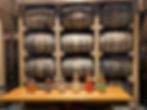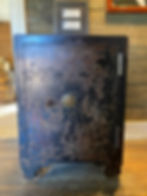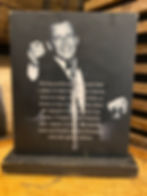The Demise of Jasper 'Jack' Daniel
- Cheré Dastugue Coen
- Mar 30, 2022
- 3 min read
In the southern Tennessee countryside lies the hamlet of Lynchburg with a downtown so small one might blink and miss its lone crossroads. And yet one Lynchburg company produces a world-famous whiskey.

Jasper “Jack” Newton Daniel established his distillery in Lynchburg in the mid-1800s, producing a unique type of bourbon whiskey that’s today known as “Tennessee Whiskey.” He distilled mostly corn and aged the alcohol in charred American oak barrels, much like bourbon, but Jack took it one step further, passing the liquid through a charcoal filter. There’s a fascinating story about how Jack learned this process that’s famous today — from a former slave named Nearest Green! — but that’s a story for the next blog post. Stay tuned.
Today, Jack Daniel’s whiskey is famous around the world, but 300,000 tourists visit the small town of Lynchburg every year to witness where the magic happens. The distillery tour takes visitors past the cave where spring water emerges from the limestone, a vital part of making great Tennessee whiskey; the limestone helps eradicate the iron found in most waters and that adds to the whiskey flavor. Visitors also tour sections of the distillery, the bottling room and the barrel room, but this blog post concerns Jack’s original office.

The old office building remains on the property and the wooden one-story structure contained the distillery’s management team. Naturally, a thick iron office safe helped keep money and important documents intact.
Jack Daniel traveled quite a bit in those days, letting others handle office duties. His nephew, Lem Motlow, for instance, was keeper of the safe, in addition to serving as bookkeeper and office manager, according to Jack Daniel’s tour guide Ben Spears
“Lem was familiar with the safe, Jack was not familiar with it,” said Spears. "Jack would rather rely on Lem to open it for him.”

One early morning when Jack was in need of the safe’s contents, and Lem was not in the office, Jack attempted to open the safe on his own.
“So, one morning, the story goes, Jack came in early because the night before he had left the office without getting what he needed to travel the next day,” Spears explained. “He realizes he’s going to have to go into work first, show up early, get what he needs and leave before anybody basically hangs him up at work.”
But Jack doesn’t know the combination, even though he tries. In frustration, the distiller kicks the safe with his foot and shatters his left big toe.
“He doesn’t see a doctor about it, thinks he can walk it off,” Spears said. “All those bad decisions lead to an infection, and then the toe’s amputation since that’s all they can do at that point in history.”
After Jack loses his toe, they amputate his foot and knee when the infection spreads. Finally, the doctors take his left leg up to his hip.

“Six years after kicking that safe Jack Daniels dies from complications from the infection from the injury,” Spears told us.
Jasper “Jack” Newton Daniel, the creator of one of the largest whiskey companies in the world, died of blood poisoning on Oct. 9, 1911. Many people, including the distillery’s tour guides, stick to the story of kicking the safe, although some have claimed otherwise.
Regardless, it’s a great story with morals, said Spears.
“It teaches a lot of lessons,” he said. “Patience for one — don’t be quick to anger, don’t kick the safe.”
The overall lesson, however, is never go to work too early.
“It could kill you,” Spears said with a grin.

Want to toast Jack?
How do you take your whiskey?
This author prefers to drink Jack Daniel’s on ice with a small splash of water. My mother said that was sacrilegious but I’m in good company. Frank Sinatra enjoyed his Jack Daniel’s with three ice cubes, two fingers of Jack Daniel’s (which he kept on stage during his performances) and one splash of water.






